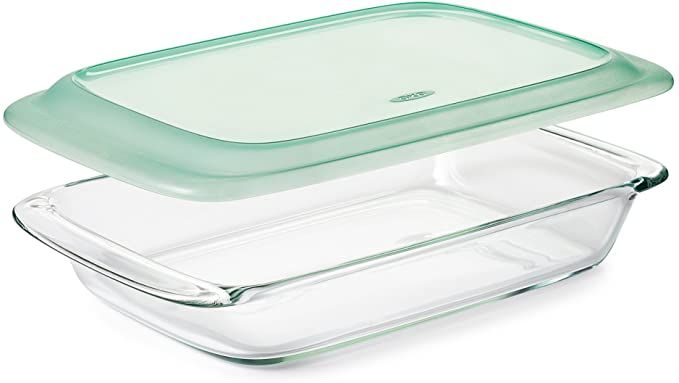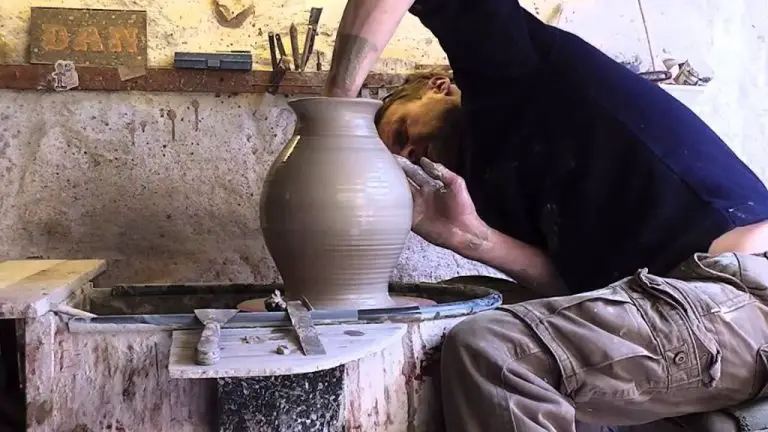How Durable Is Oven Bake Clay?
What is Oven Bake Clay?
Oven bake clay, also known as polymer clay, is a type of modeling clay that cures and hardens when baked at relatively low temperatures in a regular home oven. Unlike traditional clays like terracotta that need to be fired at much higher temperatures in a kiln, oven bake clays can be easily hardened at home using an oven.
Some common brands of oven bake clays include Sculpey, FIMO, Cernit, Kato Polyclay and Premo. These clays come in a wide variety of colors that can be blended and mixed to create new custom colors and effects. Oven bake clays remain soft and pliable until cured in the oven, making them easy to work with and shape by hand without needing specialized tools or equipment.
The most common uses of oven bake clays are for arts and crafts, creating sculptures, jewelry making, doll and figurine making, clay modeling and pottery. The clays can be hand-shaped and molded into detailed sculptures, pendants, beads, buttons and charms. Many crafters and artists prefer oven bake clays because the results can mimic fine porcelain, yet be achieved at home without a kiln.
Clay Composition and Properties
Oven-bake polymer clay is made from a variety of ingredients that give it unique properties. The main ingredients are polyvinyl chloride (PVC), plasticizers, and fillers like cornstarch and calcium carbonate according to Wikipedia (https://en.wikipedia.org/wiki/Polymer_clay). When raw, polymer clay is pliable and can be shaped into various forms and sculptures. The clay hardens into a durable plastic material when baked in a standard oven per the recommended baking instructions.
Polymer clay is considered non-toxic and safe for arts and crafts use. It does not contain any clay minerals, but has a texture similar to ceramic clay. The pliability when raw and ability to harden into a strong, durable material are what make polymer clay useful for creating long-lasting crafts and jewelry (https://web.faa.illinois.edu/app/uploads/sites/6/2021/05/SCULPEY-Polymer-Clay.pdf).

Baking Instructions
The recommended baking temperature for oven bake clay is generally 275°F. This allows the clay to harden fully without scorching or burning. According to the Sculpey website, you should bake polymer clay for 15-30 minutes per 1⁄4 inch of thickness https://www.sculpey.com/products/baking-polymer-clay. Always check the package instructions as times may vary between brands.
When baking in a standard home oven, place the clay on a cookie sheet or baking pan. Make sure to leave space between pieces so they don’t touch. Home ovens can sometimes have hot or cool spots which may impact baking, so rotate the pan once during baking for even results. A dedicated clay oven provides even, consistent heat and faster baking than a home oven.
It’s important not to overbake clay as it can scorch or burn. Stop baking as soon as the clay has hardened fully. The clay should be firm but not browned. Carefully watch baking times and test thickness with a toothpick to ensure proper hardness without overbaking.
Durability When Baked
Fully hardened oven bake clay is quite strong and durable compared to other modeling clay options like air dry clay or polymer clay (Sculpey). The baking process allows the clay to fully harden, unlike air dry clays which can remain somewhat flexible. Oven bake clay is a type of polymer clay that undergoes a chemical reaction when baked, forming strong molecular bonds.
Once properly baked according to package instructions, oven bake clay maintains its shape and rigidity even under stress. Finished pieces do not soften or melt under high temperatures the way polymer clays can. The baked clay can become fragile in very thin areas prone to chipping, but overall oven bake clay has excellent durability for arts, crafts, and sculptures (Reddit). With proper care, oven bake clay items can last for many years.
Using a Sealers
Oven bake clay can gain extra durability and protection by applying a sealer after baking and before using the finished piece. Sealing will help guard against moisture, scratches, and general wear and tear (source). Common sealers include polyurethane, acrylics, and varnishes specifically made for polymer clay like Fimo Gloss Varnish (source). Varnishes formulated for clay provide a durable, flexible protective coating.
Applying multiple thin coats of a sealer allows for better protection compared to a single thick coat. Let each coat fully dry before adding the next. Check the sealer directions for recommended number of coats. Usually 2-3 thin layers are ideal for oven bake clay to gain noticeably more durability while preserving the color and finish (source).
Clay Item Care
Clay items can last a long time if properly cared for. Oven baked clay is brittle when thin sections are used, so handle with care to avoid breaking delicate parts. Dust pieces regularly with a soft brush to prevent dust buildup in crevices. Avoid using liquids or harsh cleaners which can stain or deteriorate the clay over time.
Store clay crafts in a dry, room temperature area away from direct sunlight which can cause fading. Avoid storing in areas with large temperature fluctuations which can cause cracking. Place soft cushioning materials between items to prevent rubbing and scratching during storage. Limit handling to maintain oils from skin contacting the clay surface.
With gentle care and maintenance, oven baked clay crafts can provide enjoyment for many years. Proper storage and cleaning habits can maximize the longevity of clay creations. Handle gently, keep dusted, and avoid moisture, heat, or direct sunlight to preserve the color and integrity of clay projects.
Clay vs Ceramic Durability
There are some key differences in durability between clay and ceramic. Clay is naturally porous and permeable to water, which can make it less durable than ceramic over time. However, when clay is fired at high temperatures it can become nearly as durable as ceramic. According to Shreeram Kaolin, clay lacks the strength of ceramics when exposed to stress, leading it to potentially crack or break under pressure.
A major factor impacting ceramic’s durability is the glassy coating applied called a glaze. Glazes make the ceramic non-porous and vitrified, protecting it from water absorption and damage. According to Kiln Frog, stoneware clay becomes vitrified and non-porous after firing, making it less brittle and more durable than unfired clay. However, ceramic’s lack of flexibility means it can shatter when dropped, unlike polymer clays.
The porosity and permeability of unfired clay means it readily absorbs water, leading to reduced durability. But when fired, clay can become nearly impermeable like ceramic. With proper firing and glazing, clay can be exceptionally durable, approaching or matching ceramic. But unglazed or low-fired clay retains some porosity, requiring additional care and sealing to maximize durability.
Improving Durability
Baking oven bake clay correctly is key for increasing hardness and durability. Be sure to bake sculpted items at the temperature and for the length of time specified by the clay manufacturer, usually for 15-30 minutes at 265-275°F. Insufficient baking can result in items that are prone to cracking or denting over time.
Using thicker sections of clay can also improve durability for sculpted pieces. Thin or narrow parts are weaker and more likely to bend or break. Consider using armatures or wire frames to support thinner areas.
Areas that will be handled frequently or jut out, like arms or legs on a figurine, can be reinforced before baking by adding extra clay to beef up weak points. Clay brands like Sculpey also sell liquid clay hardeners that can be brushed onto areas needing more strength.
Proper baking is the best way to harden oven-bake polymer clay for maximum toughness and longevity. Using sufficient clay thickness and reinforcing fragile sections can further boost durability.
Clay Craft Longevity
With proper care, oven-baked polymer clay crafts can last for many years. The plastic properties of polymer clay allow it to remain durable over time after being cured in the oven. According to the Sculpey website, “Sculpey® clay can sit out for months before baking. So, if you’re someone who likes to take long breaks during projects, you’ll enjoy the capabilities of this oven-bake clay.” 1 Once cooled completely, well-baked polymer clay is quite hard and maintains its shape.
However, there are some factors that can impact the longevity of polymer clay crafts. Any paints or liquid clays used to decorate the clay may eventually fade or discolor slightly over time. Using a protective sealer can help prolong the vibrancy of painted details. The clay itself can also start to show signs of wear after many years, losing some flexibility. If this happens, the craft can be restored by gently rebaking it to return the clay to its original durable state.
With proper baking, sealing, and care, most oven-baked polymer clay crafts can remain intact and usable for 5-10 years or longer. While the colors may fade, the sculpture should maintain its structural integrity. With occasional rebaking and touching up of paint, well-made polymer clay crafts can last for many years before needing to be fully replaced.
When Clay Is Not Durable Enough
While oven-baked polymer clay can be quite durable if properly prepared and baked, there are situations where it may not hold up well to prolonged use:
Very delicate pieces with thin areas and fine details can be prone to damage and breaking. According to Avoid These 10 Sculpey Mistakes (and other clays, too!), thin areas are more flexible when baked but also more fragile. Handles and thin protrusions tend to be weak points.
Areas where the clay is too thin are likely to crack and break over time, especially with repeated handling. How long does the clay last once baked? advises to avoid making pieces too thin, as polymer clay is not as durable as plastics made from molding.
For these reasons, oven-baked polymer clay may be better suited for keepsake items rather than functional pieces meant for prolonged, frequent use. Very delicate sculptures or jewelry may not hold up as well as sturdier clay creations.


